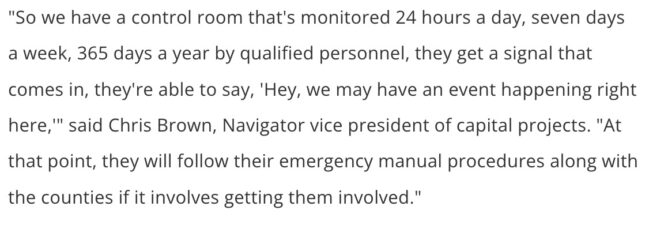Exxon/Denbury CO2 Pipeline Leaks in Louisiana, Triggering Shelter in Place Order
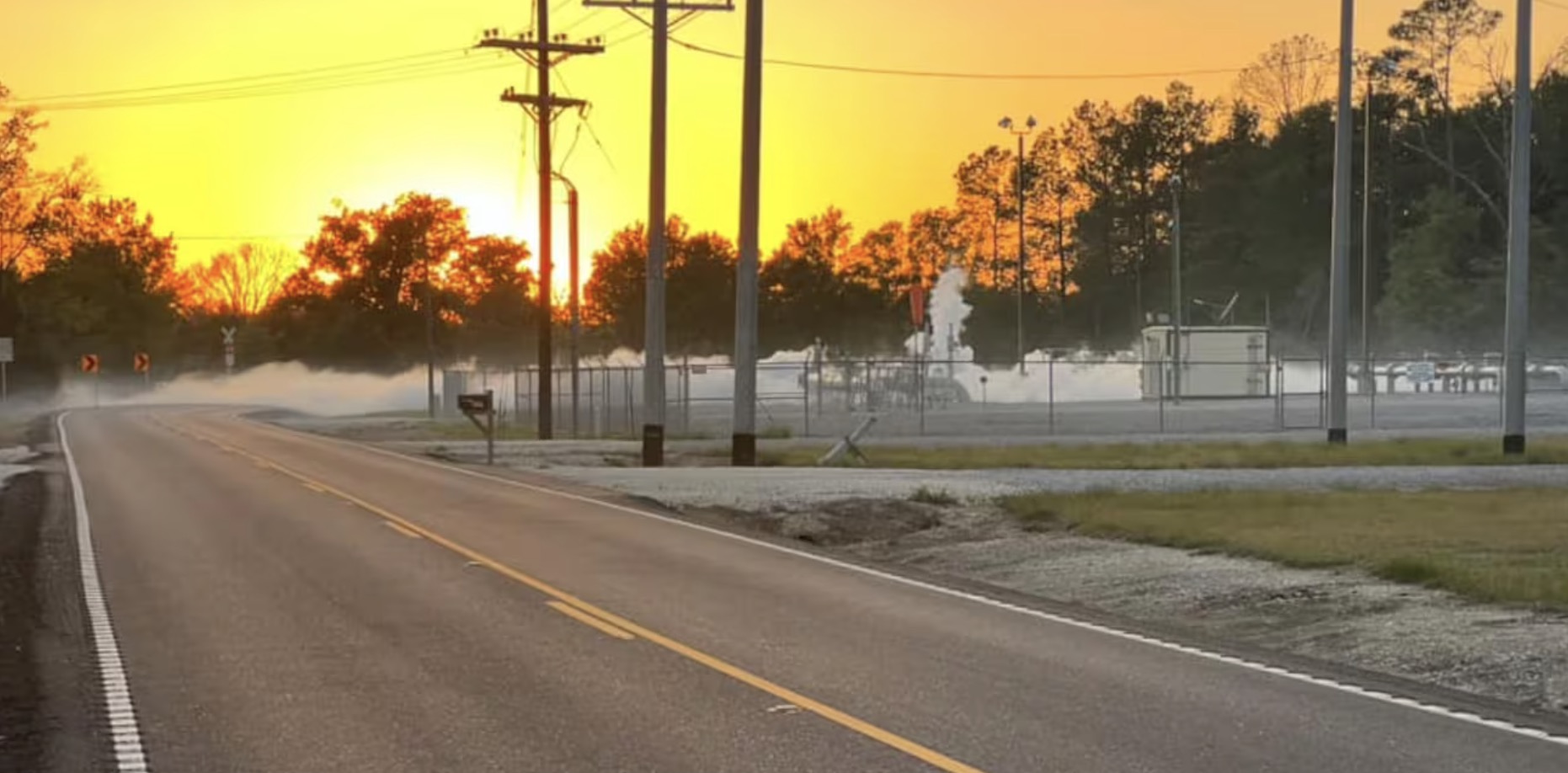
Denbury CO2 pipeline leak near Sulphur, La. on April 3. (Image: Calcasieu Parish Police Jury)
Update 4/19/24:
The Guardian published the first substantial on-the-ground coverage from the April 3 incident, sixteen days later on April 19: “‘Wake-up call’: pipeline leak exposes carbon capture safety gaps, advocates say“. The reporting by Nina Lakhani from Sulphur, Louisiana where the incident occurred revealed previously unknown key details, such as the CO2 leak was first discovered by neighbor Holly McGee, who told the Guardian “she reported the leak to the sheriff’s office around 6pm on 3 April – after calls to the company went unanswered.”
McGee told the Guardian, “the leak sounded like a pressure cooker, and smelt like chemicals.”
“This wasn’t like the usual gas release that we see from time to time, this went on for a long time. I knew we should leave,” McGee, who evacuated to her grandparents home two streets away where they could still hear the CO2 leaking, told the Guardian. “If it had not been so windy, it could have been worse. We know what happened in Mississippi … I am more vigilant now.”
According to the Guardian’s reporting:
- “Interviews by the Guardian suggest that no pipeline operator was on site at the pump station where the leak occurred – and the camera monitoring the facility was not working. Exxon staff located 50 miles away in Beaumont, Texas, learned about the leak after it was reported to emergency services, the Guardian understands. It took more than two hours for an operator to arrive at the facility and fix the leak, according to the local fire department.”
- “Earlier this week, the Guardian observed contractors carrying out anti-corrosion maintenance work at the pump station, where a significant leak was previously reported in 2011.”
Pipeline companies routinely — including Summit Carbon Solutions and the defunct Navigator CO2 Ventures — publicly tout their “24/7 control room” with “the latest in leak detection technologies” to monitor for pipeline ruptures. Evidence from the Exxon/Denbury CO2 pipeline rupture on April 3, and countless other historical ruptures on oil, gas and other pipelines, shows that “neighbors” — oftentimes farmers, or even children out exploring, discover these pipeline accidents before the companies’ “early warning systems” or even local first responders.
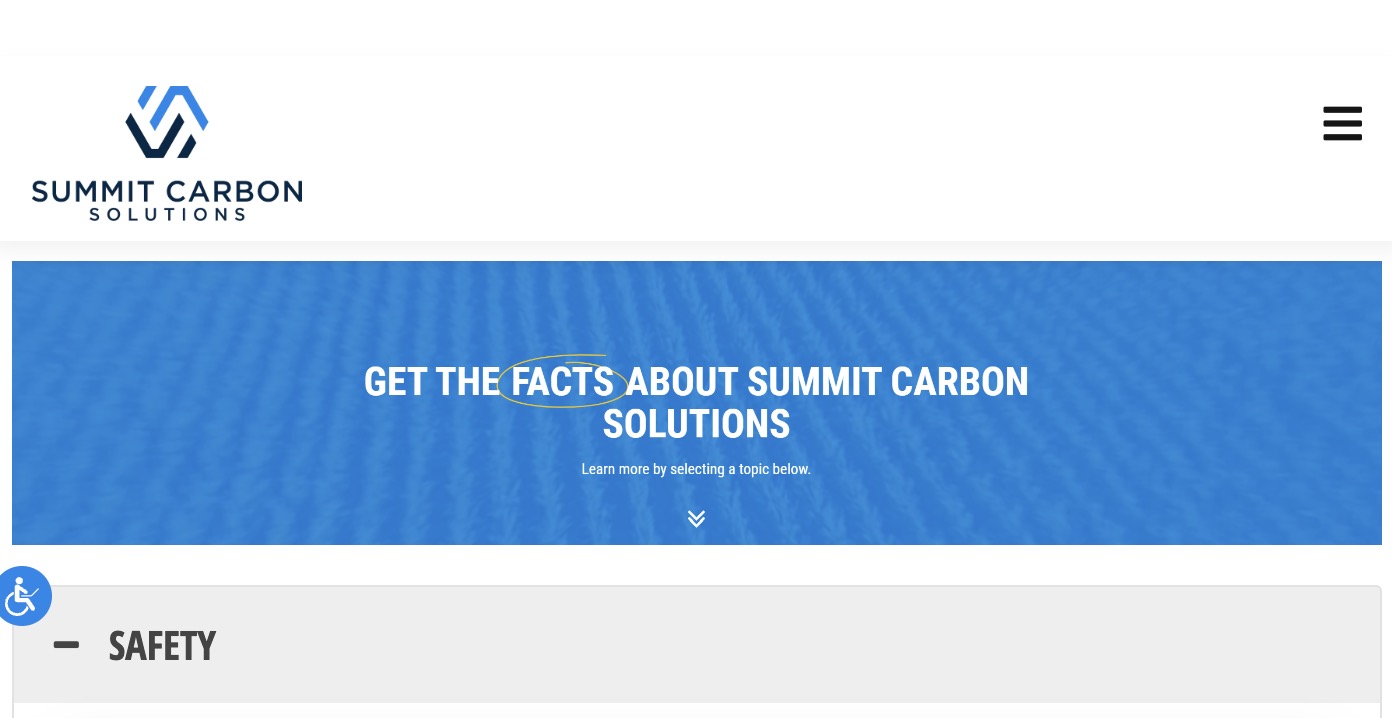
Update 4/11/24:
The National Response Center has published the initial report of the CO2 pipeline accident, including timing and estimated spill volume: at 6:18 p.m. CT on Wednesday, April 3, 2,548 barrels or 107,016 gallons (6.34 MMFCS in gas quantity) of CO2 were released over the course of the next two hours, until the final valve was closed at 8:22 p.m. The CO2 gas spread widely enough into the surrounding area that the Calcasieu Parish Police Jury issued a shelter-in-place order from around 6:30 p.m. until 9:16 p.m. for a quarter-mile radius in the neighborhood where the leak took place at Exxon/Denbury Resources’ Lake Charles Pumping Station near Sulphur, La. The U.S. Dept. of Transportation’s Pipeline and Hazardous Materials Safety Administration (PHMSA) and local police department were initially notified by whomever on the scene called to make the initial report to the National Response Center, and an investigation “assumed cause is due to an O Ring failure on the launcher pig trap door. Investigation is still underway.”
FULL TEXT OF NATIONAL RESPONSE CENTER REPORT:
“UPDATED INFORMATION IS AS FOLLOWS:
CHANGED THE INCIDENT TYPE FROM FIXED TO PIPELINE. THE RELEASE IS SECURED. THE RELEASE STARTED AT 18:18 PM CENTRAL TIME, AND THE FINAL VALVE WAS CLOSED AT 20:22 PM CENTRAL TIME.
RELEASED QUANTITY OF CARBON DIOXIDE IS 2548 BARRELS (6.34 MMFCS IN GAS QUANTITY).
ASSUMED CAUSE OF THE LEAK IS DUE TO AN O RING FAILURE ON THE LAUNCHER PIG TRAP DOOR. INVESTIGATION IS STILL UNDERWAY.
PHMSA AND LOCAL PD HAVE BEEN NOTIFIED.
ORIGINAL REPORT:
CALLER IS REPORTING THERE IS A RELEASE OF C02 (CARBON DIOXIDE) INTO THE ATMOSPHERE FROM PUMP STATION DUE TO UNKNOWN CAUSES AT THIS TIME.”
A pipeline operated by Exxon-owned Denbury carrying highly-pressurized carbon dioxide (CO2) experienced a “leak” on Wednesday, April 3 that caused a release of CO2 that prompted a shelter-in-place order to be issued near the town of Sulphur, Louisiana.
Local TV station KPLC reported that “Calcasieu emergency preparedness officials said the Denbury pipeline was blocked off around 8:25 p.m. and the shelter-in-place order lifted shortly after. The order was issued because wind was keeping the released gas close to the ground.”
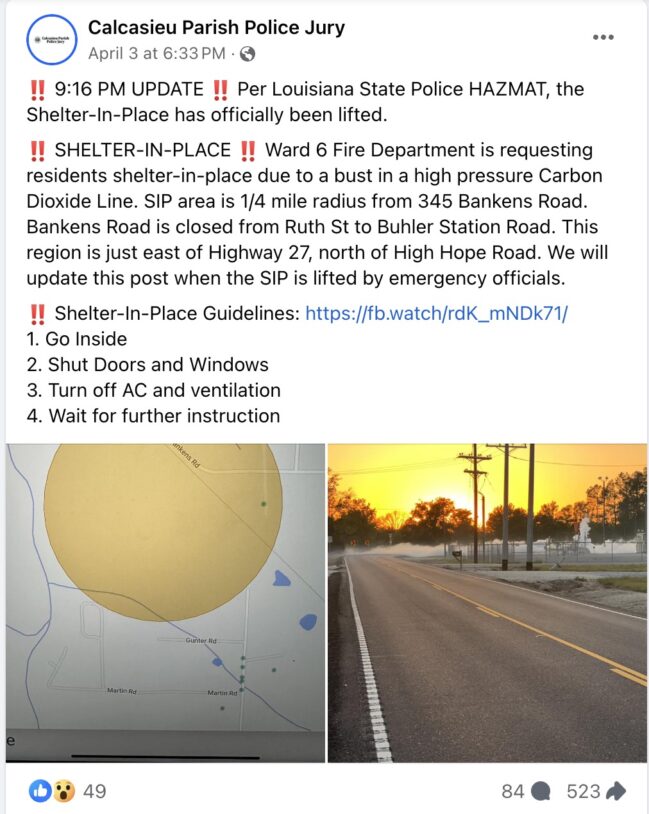 The shelter-in-place order was issued for the area within a quarter-mile radius from the 300 block of Bankens Road, where a Denbury pump station for the pipeline is located in a rural neighborhood, surrounded by homes. It was later confirmed by the U.S. Dept. of Transportation’s Pipeline and Hazardous Materials Safety Administration (PHMSA), who are reported to be on site and investigating along with the company, according to the Pipeline Safety Trust — that the leak took place at Exxon/Denbury’s Lake Charles Pumping Station for Denbury’s 24-inch Green Pipeline.
The shelter-in-place order was issued for the area within a quarter-mile radius from the 300 block of Bankens Road, where a Denbury pump station for the pipeline is located in a rural neighborhood, surrounded by homes. It was later confirmed by the U.S. Dept. of Transportation’s Pipeline and Hazardous Materials Safety Administration (PHMSA), who are reported to be on site and investigating along with the company, according to the Pipeline Safety Trust — that the leak took place at Exxon/Denbury’s Lake Charles Pumping Station for Denbury’s 24-inch Green Pipeline.
The incident was reported to the National Response Center (NRC) as being associated with the pump station’s “smart pig launcher site.” The NRC reports a possible “O-ring” or seal failure, as potential incident causation. A “smart pig (Pipeline Inspection Gauge)” is a tool used to examine a pipeline’s integrity by being placed in the interior and running sensors and cameras along the pipe’s length (View animation of a pipeline pig launcher).
At this stage in its investigation, PHMSA said the smart pig launcher site is isolated and there is no ongoing threat, according to the Pipeline Safety Trust. PHMSA’s investigation is ongoing, and to this point there has still been no estimated volume of CO2 released to be publicly disclosed.
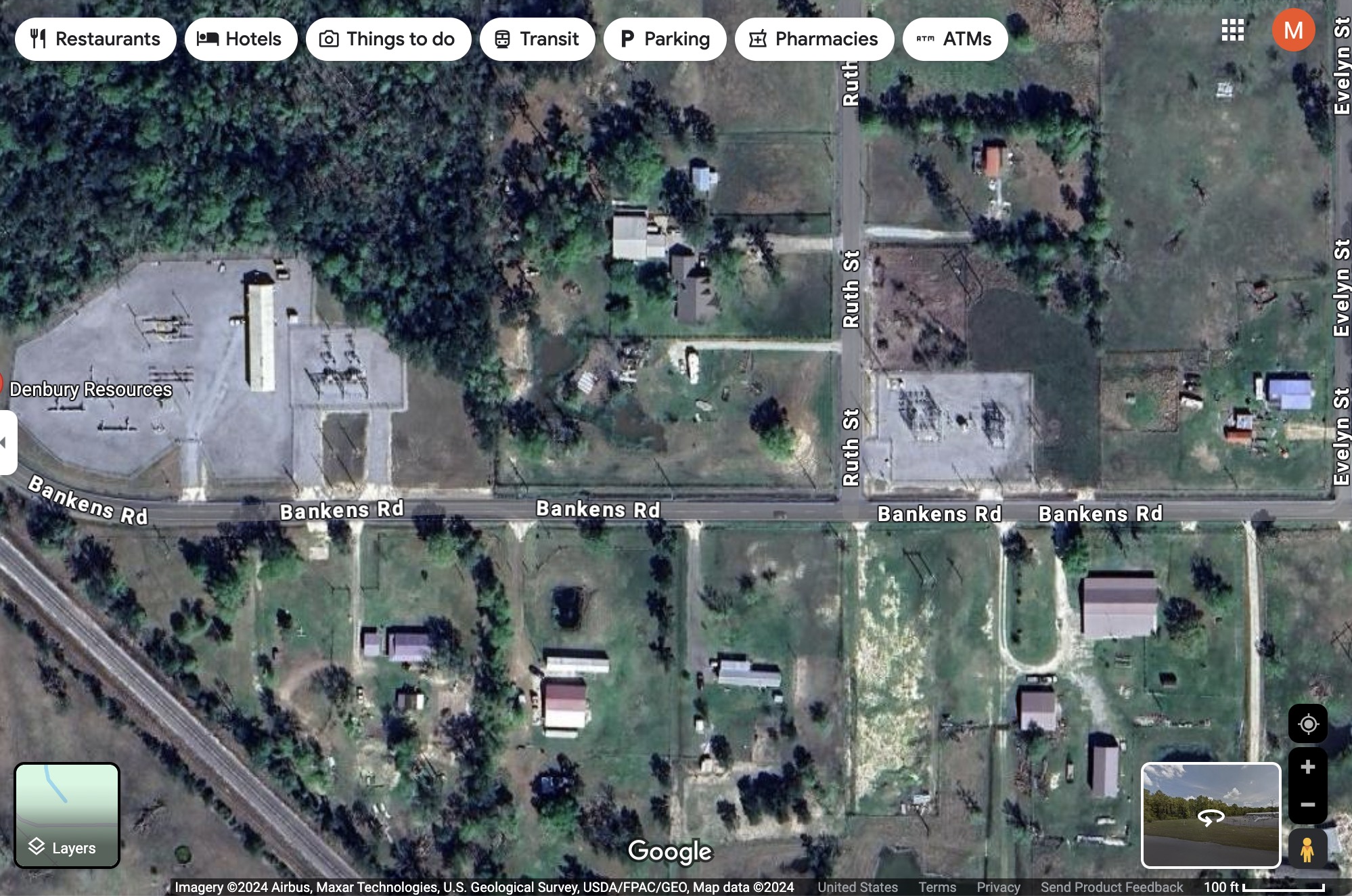
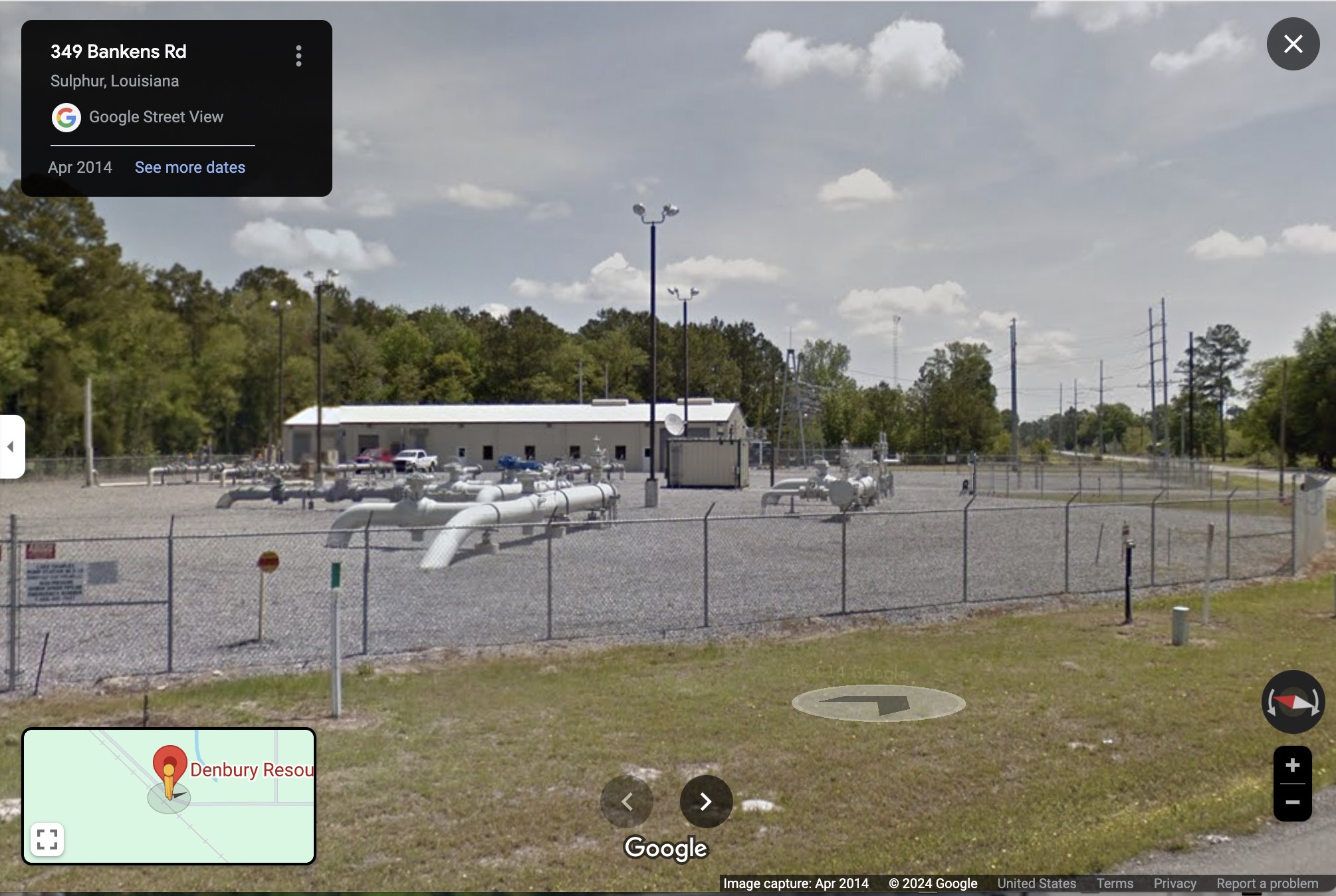
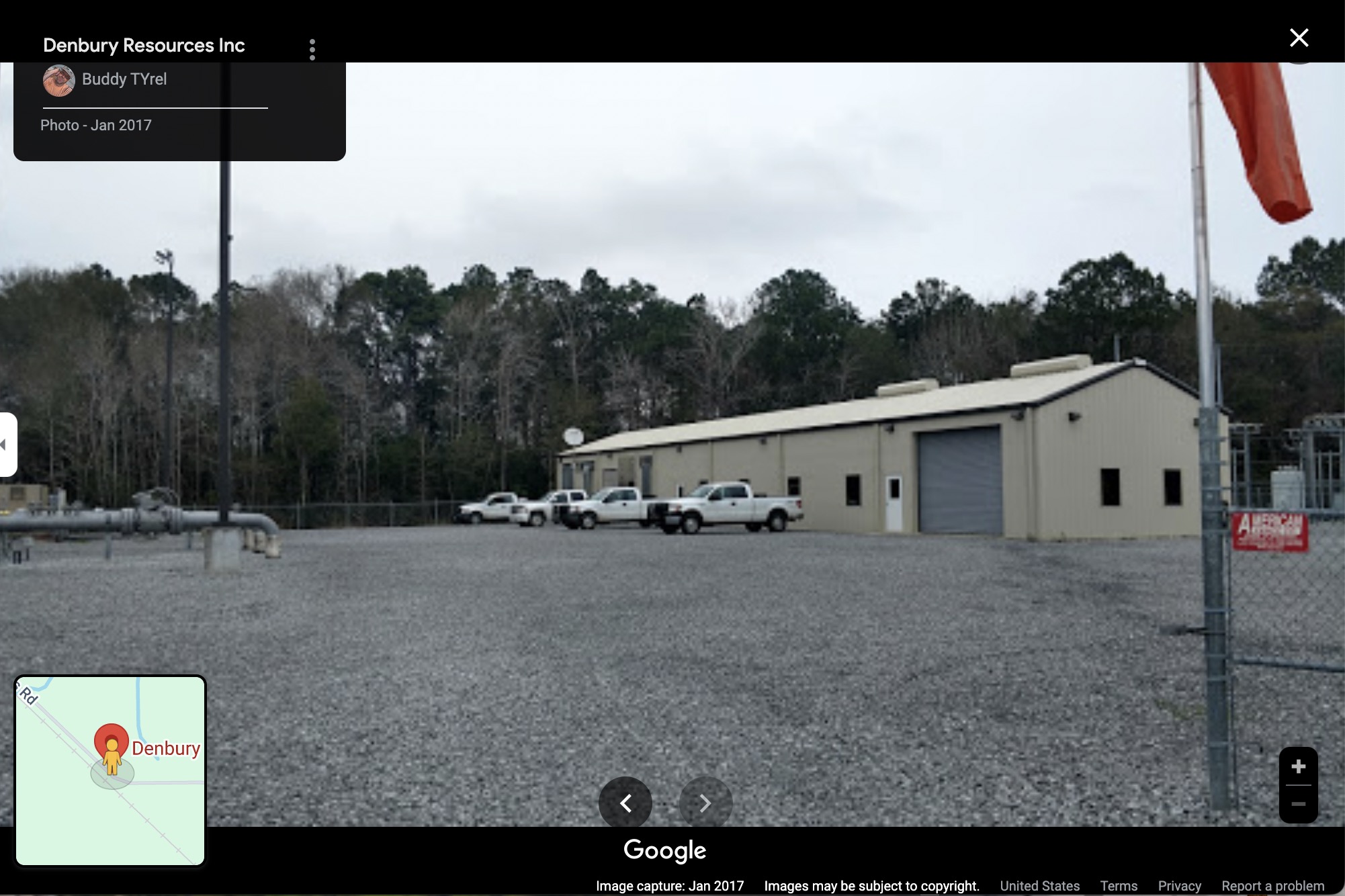
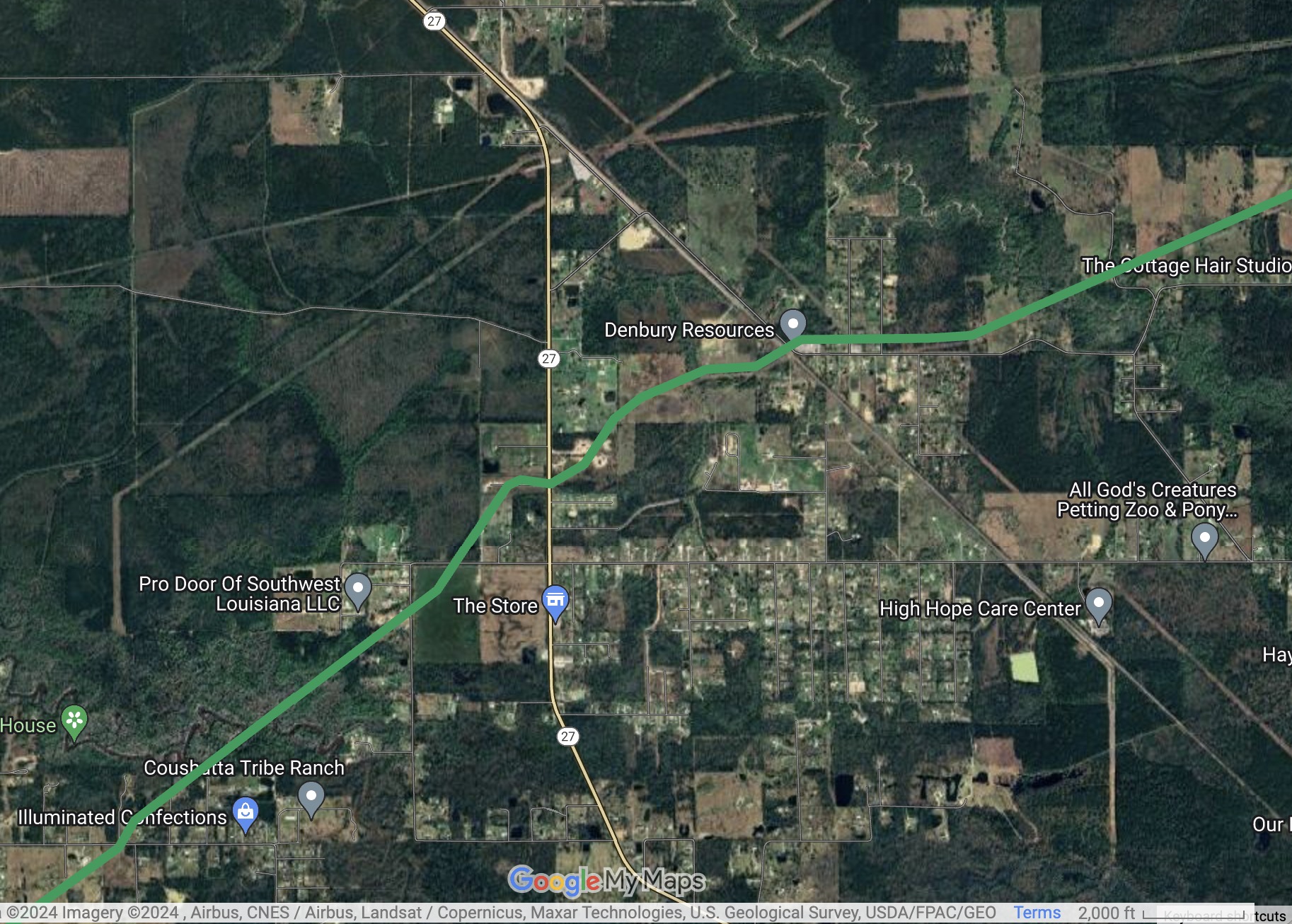
Exxon/Denbury Green Pipeline route through Sulphur, La. area
PIPELINE PIG LAUNCHER EQUIPMENT:
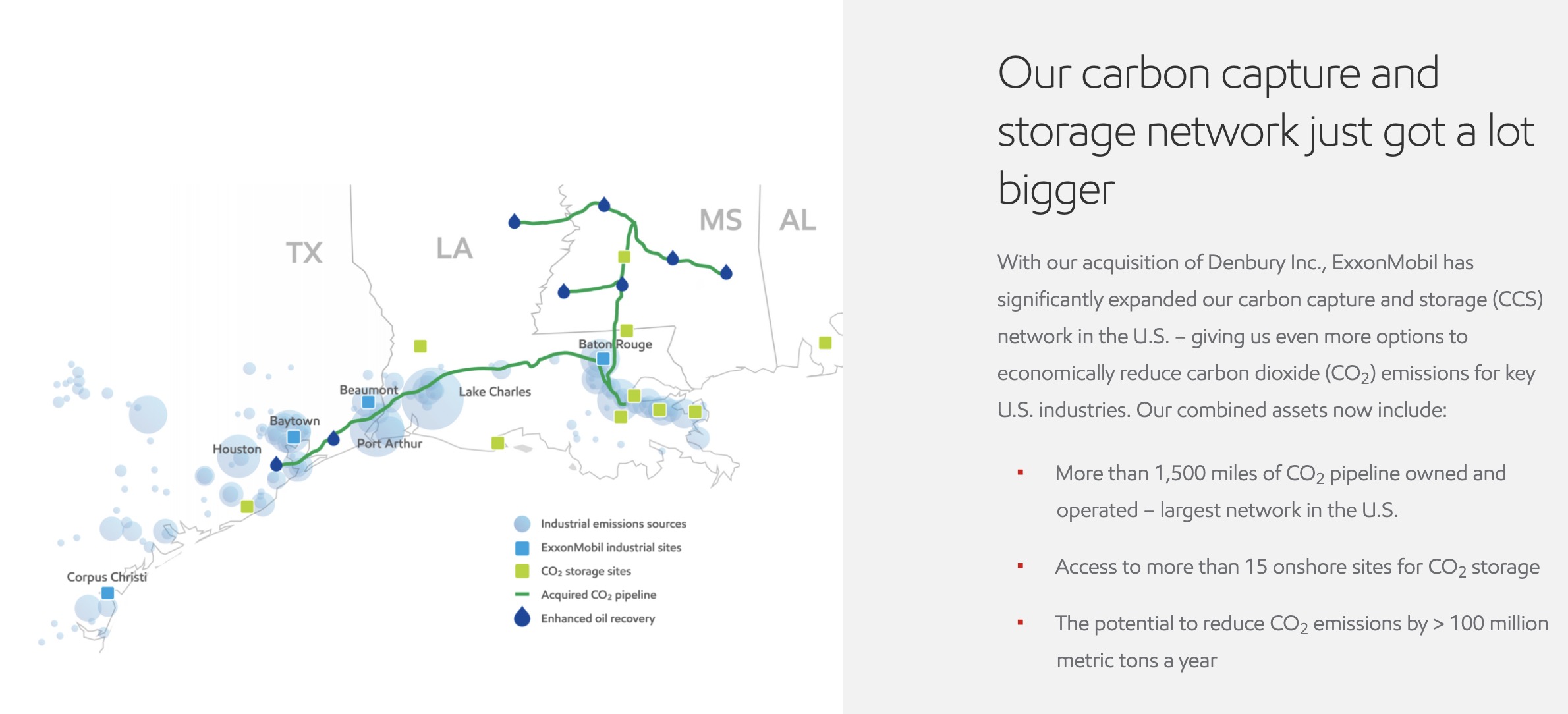 PHMSA is currently in the midst of updating regulations for CO2 pipelines, which have been in the works for more than a year and are not expected to be made public for comment until later this year. Exxon/Denbury have issued no public response to the incident nearly 48 hours later.
PHMSA is currently in the midst of updating regulations for CO2 pipelines, which have been in the works for more than a year and are not expected to be made public for comment until later this year. Exxon/Denbury have issued no public response to the incident nearly 48 hours later.
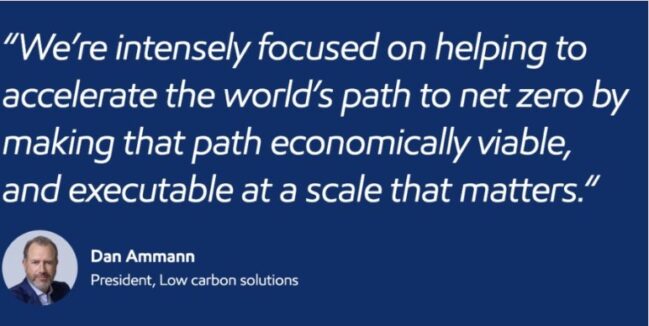 Denbury has a history of CO2 pipeline incidents in the Gulf region, where it has operated pipelines that carry CO2 from industrial operations to oil fields, where it is used to extract more oil in a process called “Enhanced Oil Recovery” (EOR). Denbury’s “Green” Pipeline is “a 24-inch diameter carbon dioxide (CO2) pipeline from the Mosaic Phosphates Company’s Faustina Plant in Donaldsonville, Louisiana, to the Hasting Oil and Gas Field in Alvin, TexasInstead of releasing CO2 into the atmosphere, Denbury’s 314-mile Green Pipeline transports the CO2 through enhanced oil recovery operations to produce oil that would otherwise remain underground. This socially and environmentally responsible recycling of CO2 represents a sustainable greenhouse gas that increases the recovery of mature domestic petroleum reserves.”
Denbury has a history of CO2 pipeline incidents in the Gulf region, where it has operated pipelines that carry CO2 from industrial operations to oil fields, where it is used to extract more oil in a process called “Enhanced Oil Recovery” (EOR). Denbury’s “Green” Pipeline is “a 24-inch diameter carbon dioxide (CO2) pipeline from the Mosaic Phosphates Company’s Faustina Plant in Donaldsonville, Louisiana, to the Hasting Oil and Gas Field in Alvin, TexasInstead of releasing CO2 into the atmosphere, Denbury’s 314-mile Green Pipeline transports the CO2 through enhanced oil recovery operations to produce oil that would otherwise remain underground. This socially and environmentally responsible recycling of CO2 represents a sustainable greenhouse gas that increases the recovery of mature domestic petroleum reserves.”
The Lake Charles Pumping Station where Wednesday’s incident occurred experienced another CO2 release from the very same pump station in March 2011. PHMSA data indicates that Denbury has experienced at least seven accidents on its CO2 lines in the Gulf region since 2010 with “unintentional” releases totaling 51,782.85 barrels of CO2 and “intentional” releases from accidents totaling 44,744.14 barrels, with a total release during this period of 96,526.99 barrels.
The industry claims that CO2 pipelines are “safer” than oil and gas pipelines, because there are fewer self-reported incidents logged with (all PHMSA pipeline spill data is “self-reported” by operators). While a failure to report an accident is a violation of law, the regulations related to the size of reportable accidents is ambiguous with regard to CO2 pipelines, so it is entirely possible that this pipeline has leaked more times than Denbury or other CO2 pipeline operators have officially reported.
Louisiana Against False Solutions issued a statement from member organizations including impacted residents of Sulphur, La.:
Roishetta Sibley Ozane, founder and CEO of The Vessel Project of Louisiana, said, “I never imagined that my own home in Sulphur, Louisiana, would become a dangerous place to be due to a CO2 leak, but I’m not surprised. As an environmental justice leader, I have been fighting against the constant threat of new fossil fuel buildout in our community, including the newly proposed false solutions of carbon capture. This CO2 leak was a stark reminder of the environmental injustices we face daily.” “Sheltering in place became not only a matter of personal safety but also a symbol of our ongoing struggle,” Ozane continued. “We were not only dealing with the immediate danger of the leak but also the long-term impacts of living in an area heavily burdened by industrial pollution. It felt like we were trapped, both physically and metaphorically, as the very air we breathed posed a threat to our health.”
James Hiatt, a resident of Calcasieu Parish and Executive Director of For a Better Bayou, said, “Last night’s carbon dioxide (CO2) leak from an ExxonMobil-owned pipeline in North Sulphur reiterates grave concerns about carbon capture and storage infrastructure’s safety. Coupled with a previous serious incident in Satartia, Mississippi, which necessitated evacuations and medical treatments due to a similar pipeline failure, these events underscore the perils tied to handling and moving CO2 in large volumes.” “This wasn’t the first incident at the North Sulphur site, highlighting a troubling pattern of safety lapses,” Hiatt continued. “Given the proposals for extensive new CO2 pipelines across South Louisiana, these repeated incidents serve as a stark warning. It’s crucial that these risks not be ignored or minimized, especially when the stakes for public safety and health are so high.”
“Bold continues to urge states, counties, and the federal government to have clear emergency response plans and proper equipment located within communities to deal with carbon pipeline incidents. We are still waiting for the final rules to come out of PHMSA, with incidents like what happened yesterday? The urgency is real. The federal government has systems in place for the tax credits to give billions of dollars out to these companies, so they certainly should have systems in place for emergency response,” said Jane Kleeb, Bold Alliance founder.
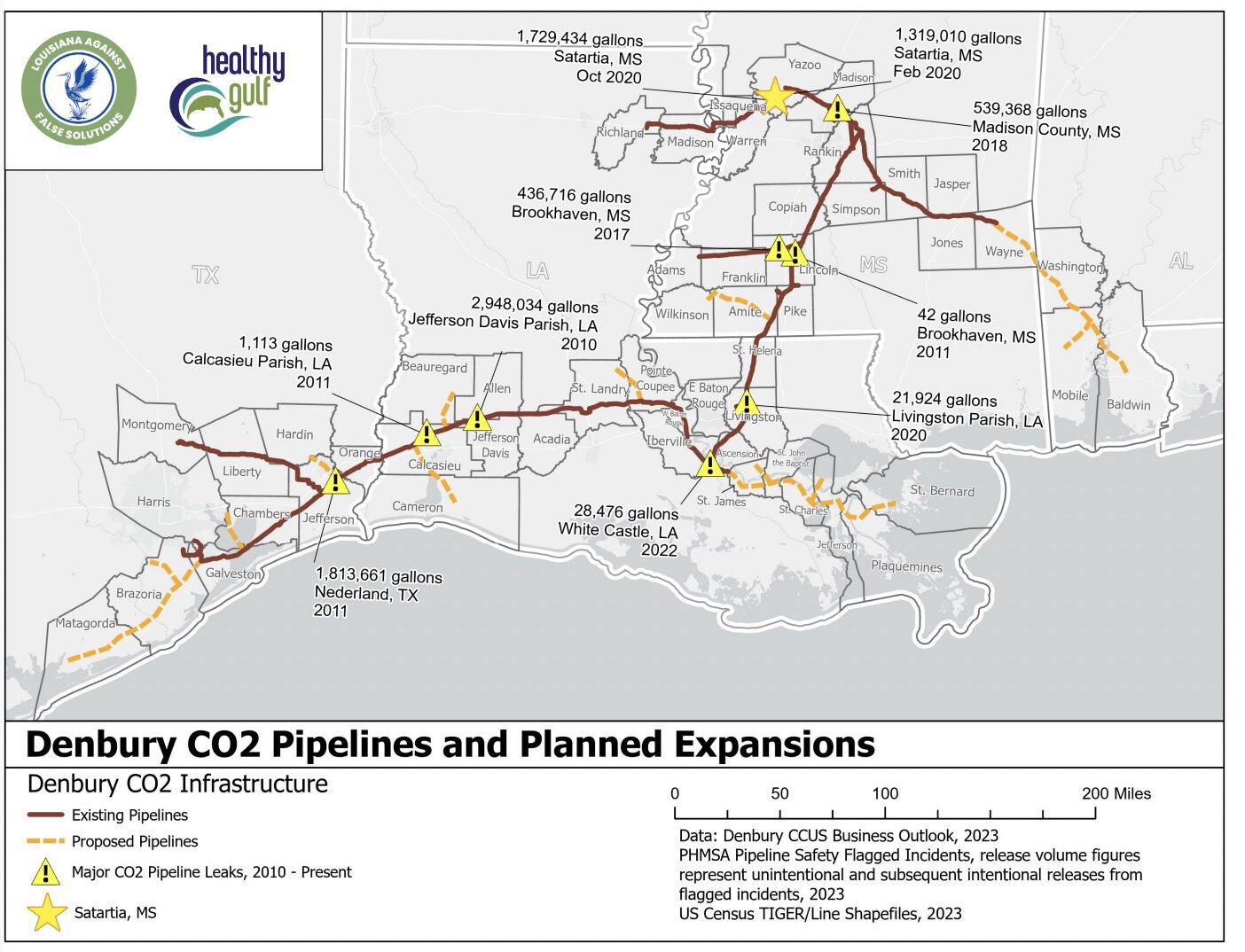
This map courtesy of Healthy Gulf shows Denbury’s CO2 pipelines in the region, along with the locations of CO2 pipeline accidents that have occurred since 2010.
PHMSA report on 2010 and 2011 “accidents” on Exxon/Denbury’s Green Pipeline that resulted in CO2 releases:
firdenburygulfcoastpipelines12202010and02142011final




